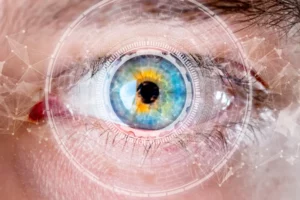Discover the phenomenal world of SBK LASIK, an ingenious vision correction procedure that has revolutionized the field. SBK LASIK (Sub-Bowman’s Keratomileusis) merges state-of-the-art laser technology with advanced corneal reshaping techniques. In this blog, we explore the wonders of the surgery, its advantages, and why it has emerged as the preferred option for individuals seeking clear vision without dependence on glasses or contact lenses.
Contents
What Is SBK Lasik Surgery
 SBK LASIK surgery, also known as Sub-Bowman’s Keratomileusis, is an advanced vision correction procedure that combines the accuracy of laser technology with corneal reshaping procedures to treat a range of refractive errors.
SBK LASIK surgery, also known as Sub-Bowman’s Keratomileusis, is an advanced vision correction procedure that combines the accuracy of laser technology with corneal reshaping procedures to treat a range of refractive errors.
Here are the important points to elaborate on the procedure of SBK LASIK surgery:
- Preoperative assessment: The patient undergoes a comprehensive eye examination to determine their suitability for SBK LASIK surgery. This includes measuring the corneal thickness, evaluating refractive errors, and assessing overall eye health.
- Administration of anesthesia: The eye is numbed using eye drops or anesthetic injections to ensure a pain-free procedure.
- Creation of corneal flap: A femtosecond laser is used to create a thin flap in the cornea. This flap serves as a protective layer during the reshaping of the cornea.
- Corneal reshaping: An excimer laser is then used to precisely remove a thin layer of corneal tissue, reshaping the cornea to correct the refractive error. The laser is guided by computerized measurements and the surgeon’s expertise.
- Flap repositioning: The corneal flap is carefully repositioned, where it adheres naturally without the need for sutures.
- Postoperative care: The patient may experience some discomfort, dryness, or blurry vision immediately after the surgery. They are provided with eye drops or medications to promote healing and reduce any potential inflammation or discomfort.
It’s important to note that the specific steps of SBK LASIK surgery may vary slightly depending on the surgeon’s technique and the equipment used. Additionally, the surgeon will provide detailed instructions on preoperative and postoperative care, which should be followed for a successful recovery and the best results.
Is SBK LASIK Surgery Painful?
 SBK LASIK is generally not considered a painful procedure. The use of anesthesia helps to minimize any potential pain or discomfort during the surgery. Some patients may experience mild discomfort or a sensation of pressure, but this varies from person to person. After the procedure, there may be some mild discomfort or gritty sensation in the eyes, which can be managed with medications. It is important to note that individual pain thresholds differ, and some patients may have a higher sensitivity.
SBK LASIK is generally not considered a painful procedure. The use of anesthesia helps to minimize any potential pain or discomfort during the surgery. Some patients may experience mild discomfort or a sensation of pressure, but this varies from person to person. After the procedure, there may be some mild discomfort or gritty sensation in the eyes, which can be managed with medications. It is important to note that individual pain thresholds differ, and some patients may have a higher sensitivity.
Merits Of SBK LASIK
 The SBK LASIK surgery is containing multiple advantages which are given below:
The SBK LASIK surgery is containing multiple advantages which are given below:
- Enhanced Precision: SBK LASIK utilizes advanced femtosecond laser technology, allowing for precise corneal reshaping.
- Expanded Eligibility: The thinner flap enables the treatment of higher degrees of refractive errors. Along with thinner corneas, broadening the range of eligible candidates.
- Reduced Risk of Postoperative Issues: It has a lower risk of complications such as corneal haze, glare, halos, and regression of vision.
- Quicker Visual Recovery: Many patients experience faster visual recovery and stability within a few days after the surgery.
- Long-Term Results: The majority of patients enjoy long-lasting visual improvement, potentially eliminating the need for glasses or contact lenses.
It’s important to consult with an experienced eye care professional to determine the suitability of the procedure for your specific needs and to fully understand the potential benefits and risks of the procedure.
Demerits of SBK LASIK
Besides, having several disadvantages the surgery is also containing a few disadvantages:
- Cost: surgery can be more expensive than traditional LASIK due to the use of advanced technology and equipment.
- Potential Dry Eyes: Temporary dryness, discomfort, or eye irritation may occur after the procedure. But it usually resolves within a few weeks.
- Risk of Flap Complications: Although rare, there is a small risk of flap-related complications. Such as flap displacement, wrinkling, or epithelial ingrowth.
- Not Suitable for Everyone: Some individuals may not be suitable candidates for it due to certain eye conditions, age, or health factors.
- Potential Complications: While rare, there are potential complications associated with any surgical procedure, including infection, inflammation, or prolonged healing.
- Preoperative Evaluation: Thorough preoperative evaluation and consultation are necessary to assess the suitability and potential risks of each individual.
It’s important to discuss the potential disadvantages and risks of the surgery with an experienced eye care professional. At the time of getting a full understanding of the procedure is suitable for your specific needs and circumstances.
Success Rate Of SBK Lasik Surgery?
 The success rate of SBK LASIK surgery is generally high around with the majority of patients achieving improved vision and reduced dependence on corrective eyewear. The success rate can vary depending on various factors, including the patient’s preoperative visual condition, the skill and experience of the surgeon, and adherence to postoperative care instructions.
The success rate of SBK LASIK surgery is generally high around with the majority of patients achieving improved vision and reduced dependence on corrective eyewear. The success rate can vary depending on various factors, including the patient’s preoperative visual condition, the skill and experience of the surgeon, and adherence to postoperative care instructions.
On average, studies have reported success rates of around 95% or higher in terms of achieving the desired visual outcome. This means that most patients experience a significant improvement in their vision. Along with satisfaction with the results of the procedure. It is important to note that while SBK LASIK is highly successful, there is always a small risk of complications or the need for enhancement procedures to fine-tune the visual outcome.
To ensure the best possible success rate, it is crucial to choose a reputable and experienced surgeon who specializes in SBK LASIK. They will assess your suitability for the procedure, provide personalized advice, and guide you through the preoperative and postoperative care processes. It is also important to attend all follow-up visits and adhere to the recommended postoperative care instructions to optimize the outcomes of the surgery.
Conclusion
SBK LASIK (Sub-Bowman’s Keratomileusis) is an advanced vision correction procedure that offers several advantages. It provides enhanced precision through the use of femtosecond laser technology. While creating a thinner corneal flap and preserving more corneal tissue. It expands the eligibility for individuals with higher degrees of refractive errors and thinner corneas, resulting in improved visual outcomes. The procedure has a reduced risk of postoperative issues and offers quicker visual recovery. Leading to high patient satisfaction and long-lasting results.
Lasik surgery is a safe 10-minute procedure to help you get rid of glasses. EyeMantra offers the most advanced LASIK options including PRK, Femto Lasik, SMILE surgery, Standard Lasik, ICL, and Contoura vision. If you have any questions on Lasik surgery in Delhi, Lasik surgery cost, and Lasik procedure, call us at 9711116605 or email at [email protected].



buying prescription drugs in mexico online
https://cmqpharma.online/# п»їbest mexican online pharmacies
mexican pharmaceuticals online
pharmacies in mexico that ship to usa: online mexican pharmacy – medication from mexico pharmacy
п»їbest mexican online pharmacies mexican online pharmacies prescription drugs mexican pharmacy
reputable mexican pharmacies online: mexican pharmacy – best online pharmacies in mexico
http://foruspharma.com/# mexico drug stores pharmacies
mail order pharmacy india: reputable indian online pharmacy – indianpharmacy com
Online medicine order indianpharmacy com best online pharmacy india
mexico pharmacies prescription drugs: mexican mail order pharmacies – mexican rx online
https://foruspharma.com/# п»їbest mexican online pharmacies
indian pharmacy online: online shopping pharmacy india – п»їlegitimate online pharmacies india
canada drugs online: canadian drug prices – canada drugs reviews
canadian pharmacy near me canadian 24 hour pharmacy cheapest pharmacy canada
canadian world pharmacy: canada pharmacy 24h – canadian drug pharmacy
http://indiapharmast.com/# india pharmacy
mexico pharmacies prescription drugs: mexican drugstore online – mexican border pharmacies shipping to usa
http://paxloviddelivery.pro/# paxlovid generic
amoxicillin 500 mg tablet: can you purchase amoxicillin online – amoxicillin discount
http://doxycyclinedelivery.pro/# doxycycline price in india
buy amoxicillin online no prescription: amoxicillin cephalexin – azithromycin amoxicillin
https://clomiddelivery.pro/# how to buy generic clomid online
https://ciprodelivery.pro/# buy ciprofloxacin over the counter
ciprofloxacin generic price: ciprofloxacin mail online – cipro
https://ciprodelivery.pro/# cipro 500mg best prices
http://clomiddelivery.pro/# how to get clomid without a prescription
https://amoxildelivery.pro/# amoxicillin order online
how much is amoxicillin prescription: amoxicillin 500 mg for sale – order amoxicillin no prescription
http://clomiddelivery.pro/# can you get generic clomid online
http://paxloviddelivery.pro/# paxlovid pharmacy
where buy generic clomid price: buying clomid – where to get cheap clomid
where to get amoxicillin over the counter: can you buy amoxicillin uk – amoxicillin buy no prescription